|
|
|
Cambridge University Press
|
An essential toolkit for language teachers who need to design language courses for working professionals, vocational schools, undergraduate and graduate students. Needs Analysis for Language Course Design is a handbook for those who prepare and teach courses in ESP. The book shows the reader how needs analysis can be used to create a detailed profile of the professional learner and how this profile can then be used to tailor make a course in language and communication for working professionals and for those studying towards a professional or vocational qualification. |
|
The Teacher's Grammar of English is a comprehensive resource text designed to help ESL/EFL teachers understand and teach American English grammar. The Teacher's Grammar of English is a comprehensive resource text designed to help ESL/EFL teachers and teachers-in-training understand and teach American English grammar. In addition to complete, up-to-date coverage on form, meaning, and usage, each chapter includes practical suggestions for teaching, as well as a unique section that analyzes common errors made by learners from different first-language backgrounds, based on current research in second-language acquisition. Review exercises throughout each chapter make the book an ideal text for a course on English grammar. An answer key is included. A chapter of past and present instructional practices provides an overview of the debate surrounding the teaching of grammar. |

|
This new, thoroughly revised edition of the acclaimed Cambridge Encyclopedia of Language incorporates the major developments in language study which have taken place since the mid 1990s. Two main new areas have been added: the rise of electronic communication in all its current forms from email to texting, and the crisis affecting the world's languages, of which half are thought to be so seriously endangered that they will die out this century. All language statistics have been updated, and additional information provided about their linguistic affiliation. All topics involving technology have been revised to take account of recent developments, notably in phonetics, language disability, and computing. Maps have been revised to include new countries or country names. Special attention has been paid to fast-moving areas such as language teaching and learning. The text design has been completely updated with many new illustrations throughout. |

|
For decades, people have been studying Shakespeare's life and times, and in recent years there has been a renewed surge of interest in aspects of his language. So how can we better understand Shakespeare? David Crystal provides a lively and original introduction to Shakespeare's language, making his plays easily accessible to modern-day audiences. Covering the five main dimensions of language structure — writing system, pronunciation, grammar, vocabulary and conversational style — this book demonstrates how examining these linguistic 'nuts and bolts' can help us achieve a greater appreciation of Shakespeare's linguistic creativity. |
|
Contracts, the foundation of economic activity, are both vital and misunderstood. This book corrects the misunderstandings through a series of engaging stories involving such diverse individuals as Martin Luther King, Maya Angelou, Clive Cussler, Lady Gaga, and Donald Trump. Capturing the essentials of this subject, the book explores recurring issues people face in contracting. It shows how age-old precedents and wisdom still apply today and how contract law's inherent dynamism cautions against exuberant reforms. The book will appeal to the general reader and specialists in the field alike, and to both teachers and students of contracts. |

|
King Richard III is one of Shakespeare's most popular and frequently performed plays. Janis Lull's introduction to this new edition, based on the First Folio, emphasises the play's tragic themes — individual identity, determinism and choice — and stresses the importance of women's roles in the play. It also underscores the special relationship between Richard III and Macbeth, demonstrating that the later tragedy re-examines issues raised in the earlier one. A thorough performance history of stage and film versions of Richard III shows how the text has been cut, rewritten and reshaped by directors and actors to enhance the role of Richard at the expense of other parts, especially those of the women. This updated edition contains a new introductory section covering recent criticism and performances — including the RSC cycles of the history plays — of this perennially popular play. The notes define the play's language in terms easily accessible to contemporary readers. |
|
Charles Edelman focuses on the play's sexual politics and recent scholarship devoted to the position of Jews in Shakespeare's time in this new edition. He surveys the international scope of theatrical interpretations of The Merchant in the 1980s and 1990s as well as different ways of tackling the troubling figure of Shylock. |

|
Much Ado has always been popular on the stage. This edition pays especial attention to the history and range of theatrical interpretation, in which the most famous actors, from the time of Garrick to the present, have appeared as the sparring lovers Benedick and Beatrice. A full commentary includes annotation of the many sexual jokes in the play that have been obscured by the complexity of Elizabethan language. For this updated edition Angela Stock has added a new section to the Introduction in which she reviews the romantic and the darker, more cynical aspects of the play in the light of late twentieth-century stage, film and critical interpretations. She also tackles the interesting question of Beatrice's proper age and the critical fortunes of Hero and Claudio in terms of the play's interest in sexuality and misogyny, eavesdropping and deception. |
|
Henry VIII was one of Shakespeare's most popular plays in the eighteenth and nineteenth centuries when great actors took the roles of Queen Katherine and Cardinal Wolsey, and elaborate pageantry was much extended. It has not been staged so frequently in the twentieth century, but a number of important recent productions have revealed the theatrical potential of a more complete text. Professor Margeson considers and illustrates the stage history of the play, and gives a balanced account of the authorship controversy from the mid-nineteenth century, when John Fletcher's name was first put forward as a collaborator, to recent scholarship, which has not yet reached a consensus. The Introduction considers the political and religious background of the play, its pageant-like structure and visual effects, and its varied ironies. The commentary is detailed but concise, explaining difficult passages and contemporary references, and suggesting how the play might have been staged in an Elizabethan theatre, or might still be staged for a modern audience. |

|
Edward III is a major new addition to the Shakespearean canon. Melchiori claims that Shakespeare is the author of a significant part of the play, the extent of which is discussed in detail. The introduction explores the play's historical background and its relationship to the early cycle of history plays. The commentary examines in depth the play's linguistic and poetic features, while an extensive appendix on the use of sources explains the stages of its composition. |

|
This is a fully annotated edition of all the poems which are now generally regarded as Shakespeare's, excluding the Sonnets. It contains Venus and Adonis, The Rape of Lucrece, The Phoenix and the Turtle, The Passionate Pilgrim, and A Lover's Complaint. The introduction to the two long narrative poems examines their place within the classical and Renaissance European traditions, an issue which also applies to The Phoenix and the Turtle. John Roe analyses the conditions in which the collection was produced, and weighs the evidence for and against Shakespeare's authorship of A Lover's Complaint and the much-debated question of its genre. He demonstrates how in his management of formal tropes Shakespeare, like the best Elizabethans, fashions a living language out of handbook oratory. This updated edition contains a new introductory section on recent critical interpretations and an updated reading list. |

|
Scott McMillin has added a new section on key events in scholarship and theater since the 1980s (including international, political, feminist and postcolonial analysis) to this updated edition of Shakespeare's Othello. The influence of historicism and cultural materialism are also taken into account, and a complete description of performances of the play on stage, film and television considers the issue of the interracial casting of main characters. |
|
The Winter's Tale is one of Shakespeare's most varied, theatrically self-conscious, and emotionally wide-ranging plays. This edition provides a newly edited text, a comprehensive introduction that takes into account current critical thinking, and a detailed commentary on the play's language designed to make it easily accessible to contemporary readers. Much of the play's copiousness inheres in its generic intermingling of tragedy, comedy, romance, pastoral, and the history play. In addition to dates and sources, the introduction attends to iterative patterns, the nature and cause of Leontes' jealousy, the staging and meaning of the bear episode, and the thematic and structural implications of the figure of Time. Special attention is paid to the ending and its tempered happiness. Performance history is integrated throughout the introduction and commentary. Textual analysis, four appendices — including the theatrical practice of doubling, and a select chronology of performance history — and a reading list complete the edition. |
|
Marga Munkelt has added a new section and pictures to the Introduction of this updated edition of Julius Caesar. It surveys stage and critical interpretations since the 1980's of Shakespeare's most famous Roman play. The reading list has also been brought up to date. |

|
One of Shakespeare's most popular yet controversial plays, this edition of The Taming of the Shrew considers its reception in the light of the hostility and embarrassment it often arouses, taking account of both scholarly defences and modern feminist criticism of the play. For this updated edition Ann Thompson has added new sections to the Introduction which describe the 'deeply problematic' nature of debates about the play and its reception since the 1980s. She discusses recent editions and textual, performance and critical studies. |

|
Since the late twentieth century, when scholarly attention began to focus on sexuality, collaboration and Shakespeare's late plays, The Two Noble Kinsmen has become an essential script. Turner and Tatspaugh's edition presents a strong case for taking the play more seriously now than ever before. A lively introduction discusses Shakespeare's craftsmanship in adapting a medieval tale for the Jacobean stage, the extent of co-authorship with John Fletcher, the rhetorical complexity of Shakespeare's late style, the themes of sexuality and friendship, and contemporary critical responses to the play. In addition to presenting a detailed history of performance, the edition calls attention to productions that have demonstrated the play's theatrical vitality and solved — or failed to solve — difficulties inherent in the text. Bringing the textual history completely up to date, the edition reflects renewed interest in The Two Noble Kinsmen, confirming it as a play for today. |
|
This extended essay by one of the world's leading historians seeks, in its first part, to excavate, and to vindicate, the neo-Roman theory of free citizens and free states as it developed in early-modern Britain. This analysis leads on to a powerful defence of the nature, purposes and goals of intellectual history and the history of ideas. As Quentin Skinner says, 'the intellectual historian can help us to appreciate how far the values embodied in our present way of life, and our present ways of thinking about those values, reflect a series of choices made at different times between different possible worlds'. This essay provides one of the most substantial statements yet made about the importance, relevance and potential excitement of this form of historical enquiry. Liberty before Liberalism is based on Quentin Skinner's Inaugural Lecture as Regius Professor of Modern History in the University of Cambridge, delivered in 1997. |
|
Are you studying Shakespeare and looking for a handy summary of plots, characters and interpretations? Or are you a keen theatre-goer wanting essential background on the Shakespeare plays you see on stage? Ideal for students and theatre enthusiasts alike, this lively and authoritative guide presents key information, clearly set out, on all Shakespeare's dramatic and poetic works, covering plots and people, sources, context, performance history and major themes. Ordered alphabetically for easy reference, each play entry features a 'key facts' box providing informative and revealing statistics, including a breakdown of each play's major roles. The guide is illustrated with striking performance photographs throughout, and also provides brief accounts of Shakespeare's life and language, Shakespeare in print and theatre in Shakespeare's time. This is an indispensable reference source for all students and theatre-goers. |
|
What is the explanation for the nature, character and evolution of the many different varieties of English in the world today? Which changes in the English language are the legacy of its origins and which are the product of novel influences in the places to which it was transported? Roots of English is a groundbreaking investigation into four dialects from parts of northern Britain out of which came the founding populations of many regions in other parts of the world. Sali Tagliamonte comprehensively describes and analyses the key features of the dialects and their implications for subsequent developments of English. Her examination of dialect features contributes substantive evidence for assessing and understanding bigger issues in sociolinguistic theory. Based on exciting new findings, the book will appeal to those interested in dialects, from the Anglophile to the syntactician. |
|
Psycholinguistics is the study of how humans produce and understand language. This textbook provides a clear introduction to the subject and is designed for students with only a basic knowledge of linguistics. It introduces central aspects of the production and comprehension of language, using examples and exercises to reinforce key points. Students will gain an understanding of the processes and representations involved in language use and how to apply such understanding to the analysis of data. Each of the larger subject areas of language production and comprehension is broken down into stages, such as putting together sentences and finding words. As students investigate these levels and processes, they also explore the interactions between them. They are encouraged to consider what language users might carry around in their heads as part of their linguistic knowledge and how this stored knowledge relates to the structures and rules proposed by theoretical linguistics. |
|